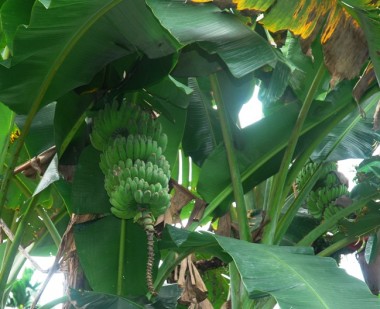Jul 04, 2017
Today at the Wild Farming Pilot #wildfarming
'Wild Farming' is a work-in-progress to mimic nature. On a vegetable plot, we will plant maybe 40% non-market plants, some with insect repellent properties, some that are just aromatic to confuse insects, etc., and 60% a mix of, or a variety of, market vegetables and plants. In our pilot plot here, the market vegetables are ridge gourd, brinjal, bird's eye chili, sweet corn and lady's fingers.
We are expecting some sweet corn next week; "GMO free some more" ![]()
Chilies should be plentiful next couple of weeks. Lady's fingers have started to produce. The terung has slowed a bit but we shall fix that with a compost dressing this couple of days. Over at the petola section, they are working overtime!
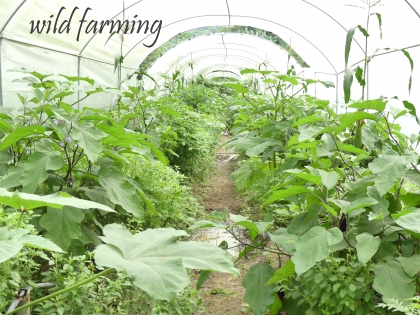
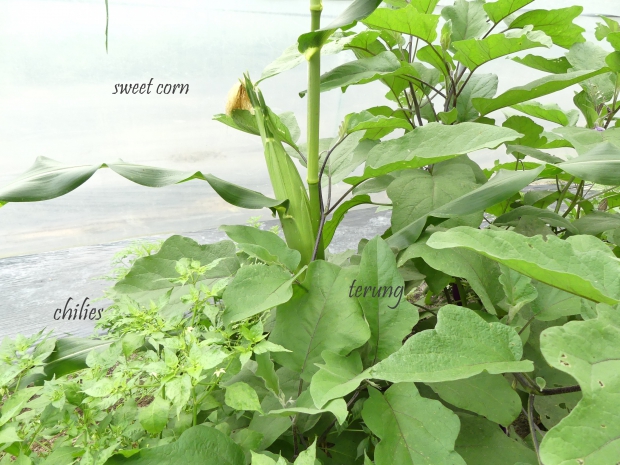

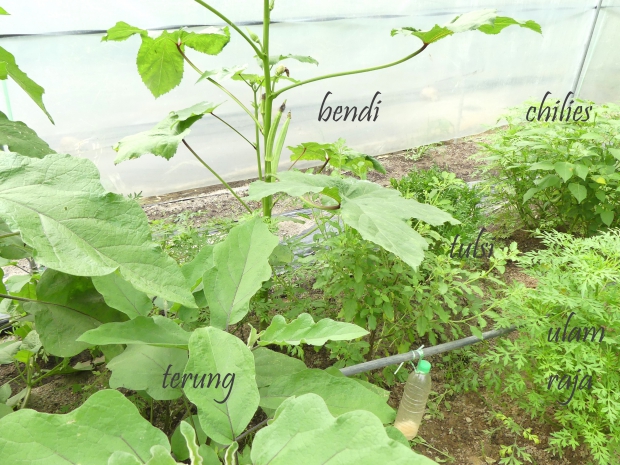
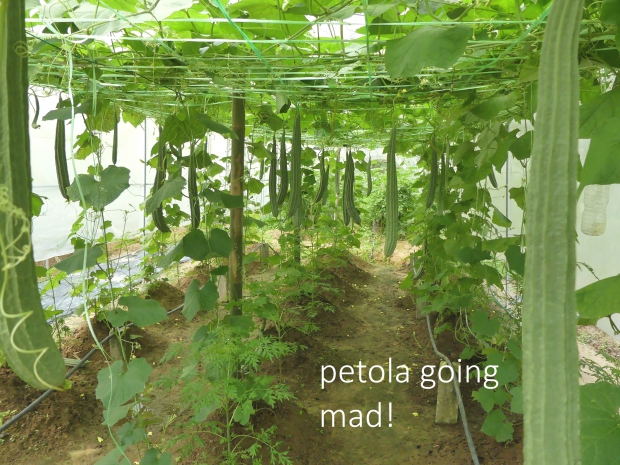
14:26 Posted in Nature Farming, Permaculture, Sustainable Farming, Wild Farming | Permalink | Comments (0) | Tags: wild farming, sustainable agriculture, organic farming
Jan 19, 2015
Hot Weather's On The Way
A bird seldom seen, though by no means rare, is the Green-billed Malkoha, Phaenicophaeus tristis. It is a jungle bird as can be seen by its habit of hopping and jumping around branches in a tree. In fact sometimes it 'runs' up a tree in a series of hops much like a squirrel.
The Malkoha has been a resident in our farm for a few years now. We were surprised to see this individual building a nest in one of our fruit trees right next to a busy farm road. It seems absolutely perturbed by our presense as it goes about gathering twigs and leaves for its nest. It must be at least 3rd generation farm-born to show this level of confidence.
We designed and maintained our farm as a sanctuary for wild-life, even predators. We hope to demonstrate that it is possible to farm and yet co-exists with Nature.
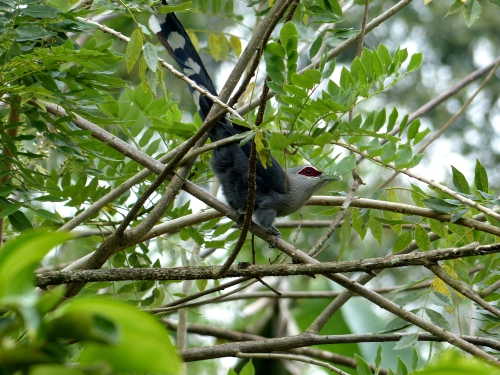
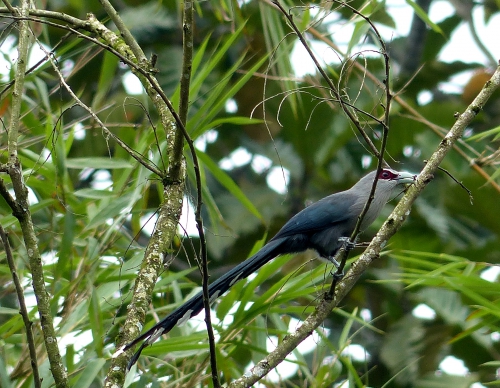
Here's a video we took of it hopping around a dead tree gathering twigs:
19:22 Posted in Blog, Sustainable Farming | Permalink | Comments (0) | Tags: phaenicophaeus tristis, green-billed malkoha, rare birds, malkoha, non-parasitic cuckoo
Apr 17, 2013
Useful Plants At The Farm - Sirihan, Piper Aduncum / Angustifolium
The early European explorers to South America must have thought this plant is so important they propagated it where ever they went. It is now found naturalised in most tropical parts of the world.
At our farm it is a valuable part of the natural remedies we have for our chickens.
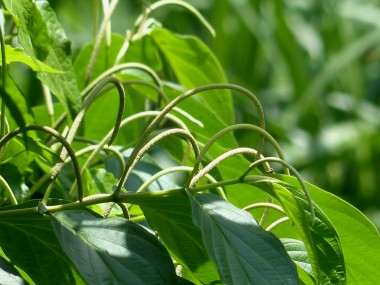
The inflorescence attracts squirrels, tree shrews and civets.
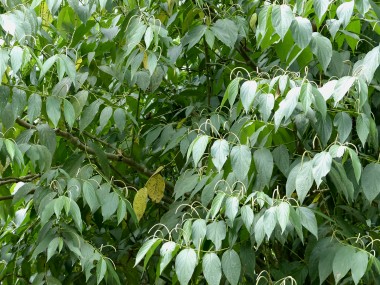
Like its cousin the green pepper vine, lots and lots of inflorescence.
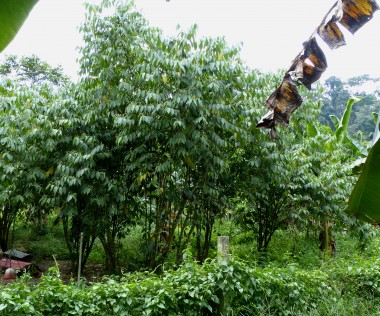
In the fields, they provide shade for the chickens but be careful, they are very invasive and will take over the entire padang!
Here's the technical information : Rain-Tree.com
Crush the leaves. If it has a slight peppery smell, you have the sirihan in your farm. Use it by pounding the leaves and squeezing out in a pail of water, or by decoction. Dosage is dependent on age and symptom.
12:02 Posted in Nature Farming, Sustainable Farming, Useful Plants | Permalink | Comments (0) | Tags: sirihan, piper aduncum, piper angustifolium, natural remedies for chickens
Apr 16, 2013
Free-Range Egg Model for Rural Farmers
This is the free-range layer model we intend to implement as a social enterprise with rural low-income farmers. If they sell the eggs themselves at the Farmers’ Market, each egg should fetch rm1.00 each. We will supply them 200 pullets that are close to laying unlike what is happening now when the poor farmers are given day-olds and in no time, disease will wipe out all the birds.
At the very least, the farmers can expect an income of between rm2500 to rm3000.00 per month.
We will be starting with five farmers in Pahang.
13:50 Posted in Blog, Chickens, Nature Farming, Permaculture, Sustainable Farming | Permalink | Comments (1) | Tags: free range egg laying model, free range eggs malaysia, organic eggs malaysia
Apr 15, 2013
Sights And Sounds Of The Farm - Emerald Doves
Emerald Doves are usually very flighty and nervous near humans due to poaching. At our farm, they are resident and are found in many nooks and corners. Many times they will just swagger off, in a pigeony way (which they are) when they see us. Here's one that's just in front of our workers' quarters. The video of it feeding in our garden captures the sounds of the farm at around 11 am, mid-morning. If we hadn't tell you, you would think the video is in the forest with the myriad sounds of birds and insects. But that's what we are trying to achieve in our farming - that we can be commercial and yet be in harmony with Nature.
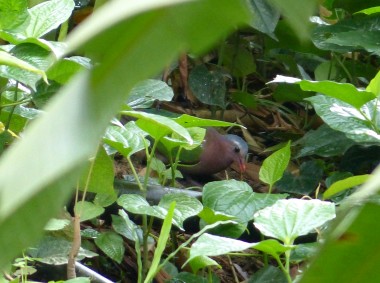
Here's a recording of the sounds that you will hear at our farm. You would be forgiven if you think you are in the jungle.
16:12 Posted in Blog, Permaculture, Sustainable Farming | Permalink | Comments (0) | Tags: emerald dove, nature farming, permaculture, sounds of tropical forest, punai tanah
Mar 15, 2013
The Yellow Birdwing, Troides helena, is now a resident
On the 1st day of this year we saw for the first time a single female Yellow Birdwing, Troides helena, flying fast at the perimeter of our farm, as if making an aerial survey.

From a distance, it looks like a bird
The Yellow Birdwing is protected by law and is becoming difficult to see in the wild due to loss of habitat and due to collectors.
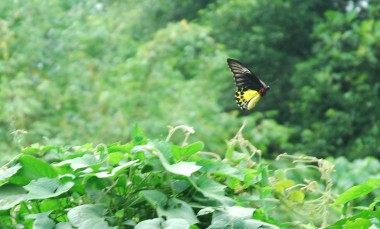
The female zooming past us on the 1st of January, 2013
Just barely 2 1/2 months later, they have made our farm their home. They are breeding and have become a familier sight. And interestingly, they show no fear of us. Also of interest to us is the fact that the farm has a larger share of birds than other places and yet they choose to breed here.
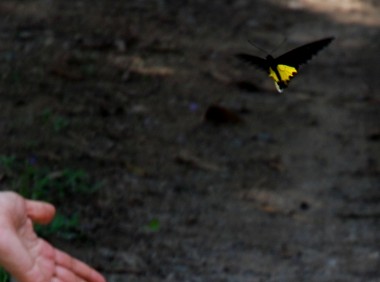
They show no fear of us
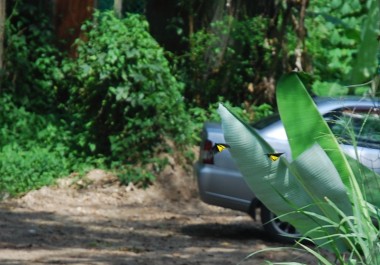
You won't find wild birdwings flying around your cars!
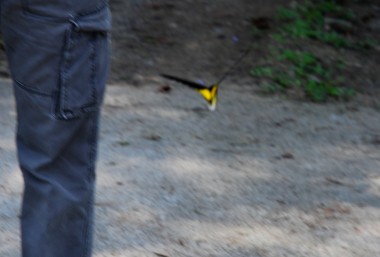
Flying close to us without fear.
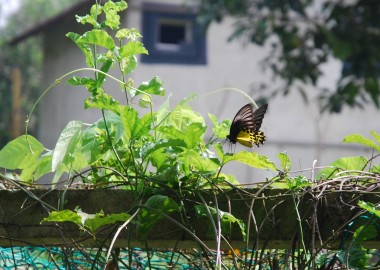
We leave fruits to ripen on the trees for birds and butterflies. Our workers are instructed not to feed nor to disturb nor to stare at the birds, and also the butterflies. We make as if they are non-existent. We plant their larval plants and we plant flowering vines that will bloom up in the canopy for the butterflies. And above all, no poison, no chemicals. We co-exists, and they so enrich our lives as farmers.
18:18 Posted in Blog, Nature Farming, Permaculture, Sustainable Farming | Permalink | Comments (0) | Tags: common yellow birdwing butterfly, troides helena, rare butterflies
Sep 01, 2012
Animal Feedstock - localise it
There is this mental block that we have to have corn for animal feed. So Malaysia try to grow corn for feed but it did not work out too well - not if you are competing with heavily subsidised imported corn. Further, corn and soya are termed 'commodities', ie it means people are allowed to speculate on its future price. For farmers that means your future is influenced by speculators. For small countries like Malaysia, that means our food security is in the hands of big spending speculators. Hey, that's not a comfortable position to be in, and really I often wonder why we allow ourselves to be dragged into such a precarious position.
So, recently due to droughts in USA, speculators have jumped in and the price of corn and soya has gone through the roof. Farmers are dying because suddenly more cash is needed, practically overnight, to feed the animals. Consumers are shouting because suddenly meats are more expensive.
One of the ways local small farms can get off the carousel is to grow feedstock that is indigenous to local climate and which require as little input as possible.
At our farm, we use cooking bananas. All imported feedstock corn is GMO. Our bananas are not.
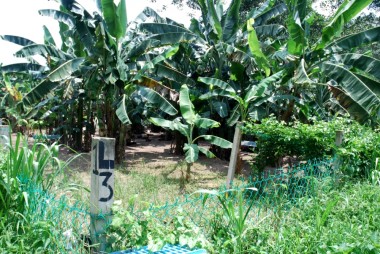
All our chicken fields are planted with these bananas
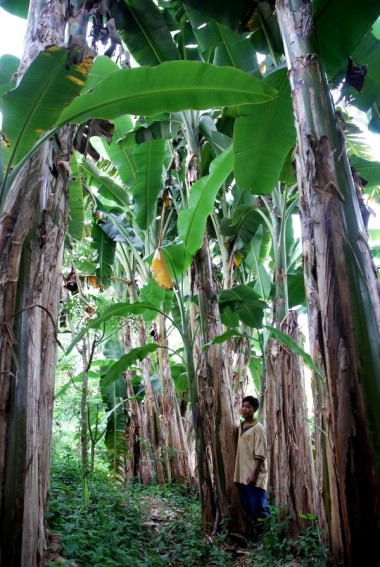
They are tall trees, up to 25ft, with large shade areas. The fruits are higher in energy values than corn.
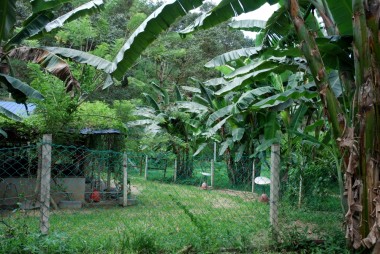
Because of their height and large shade area, we plant them to block off west-side sun, thus saving on artificial cooling costs.

They also play an ecological role by absorbing nutrients from waste water since they are water-resistant.
They produce more feedstock per acre of land than corn.
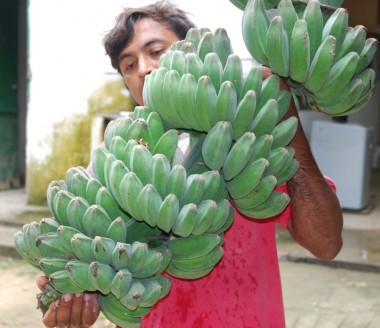
Each bunch is about 20 to 30kg
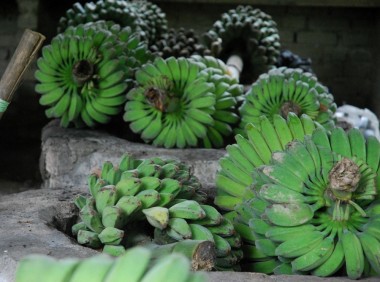
They store well, and can be readied for feedstock in a jiffy
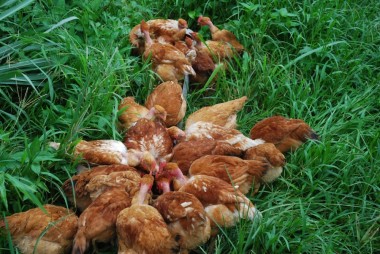
Chickens love the bananas and make a mad rush for them when presented.
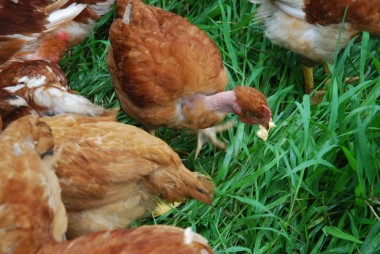
Bananas do not have the high omega 6 that corn has and thus produce a healthier meat for human consumption. Corn not only have high omega 6 but also is practically 100% GMO now.
10:31 Posted in Blog, Permaculture, Sustainable Farming | Permalink | Comments (0) | Tags: feedstock, increasing food costs, corn, soya bean, drought, cooking banana, bbb musa, local feed ingredients
Jul 22, 2012
Forest In A Farm
Twenty years ago, we started to plant forest trees in a zone within the farm. Today, some of the trees are 100 feet tall, and of course, still growing. We plan now to develop this zone into an area of bio-diversity and hopefully, some of the animal life driven off by logging uphill, will instead make this zone their home. The forest uphill was home to siamang, wild cats, and many more.
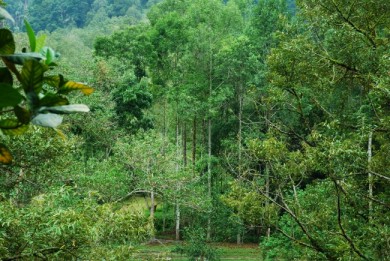
Canopy trees in a farm!
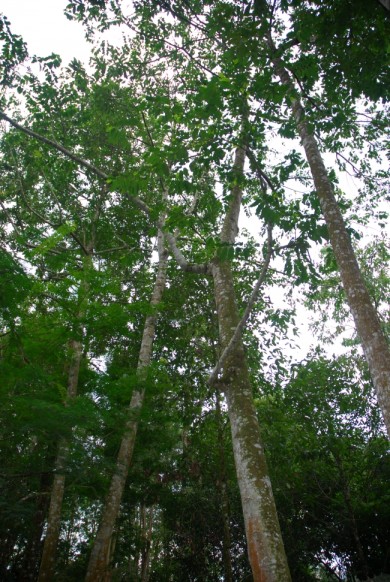
Meranti
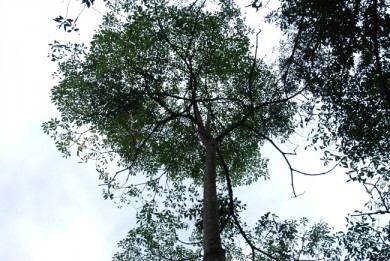
Pulai
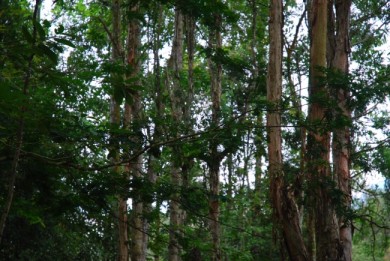
Gelam

Kasai
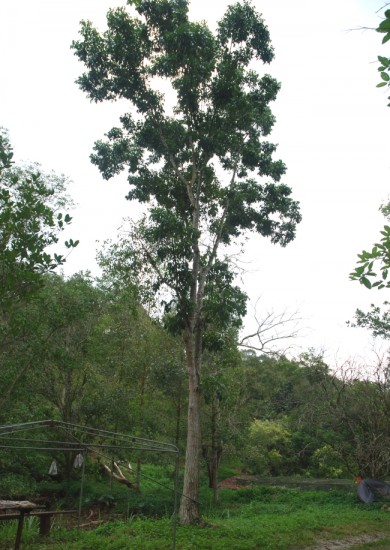
Mahagony
Sustainable agriculture is long term, planning decades ahead, not months or weeks.

At one end of the zone is this beautiful location, perhaps a suitable site for a Sustainable Agricullture Institute.
08:02 Posted in Blog, Permaculture, Sustainable Farming | Permalink | Comments (0) | Tags: agro forestry, permaculture, meranti, nyatoh, pulai, rain trees
Apr 02, 2012
Living (And Farming) With Nature
The farm is a bird sanctuary of sorts. This statement seems to be contradictory at first sight, but our farm is full of birds of various kinds (about 50 different species at last count). We can farm and yet we can live in harmony with wildlife.
If you want to have birds in your farm, you must not allow your workers to kill any bird, not even one.
Birds living in close proximity of each other will know if one dies, even of different species. A farm like ours is like a huge giant aviary. The birds are regulars, or have made their homes at the farm. If you kill one, all the rest will know of the death. After a few deaths, they will start to leave.
And why kill them? Look at the ‘enhancement’ they contribute to the farm environment:
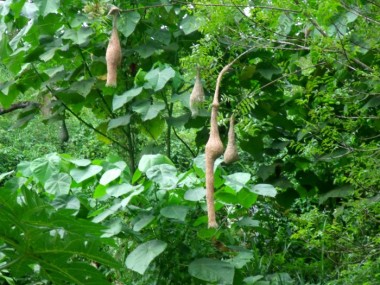
These are nests of weaver birds. They have made them hanging from a neem tree we planted in a chicken padang (field). At the background you can see one that’s green in color. The birds have quickly picked up the grass that we have cut to weave a nest. It will dry out gradually. These nests are the most effective against the many snakes that have made the farm their home too. It’s going to be tough for a regular snake to reach the entrance of the nest.
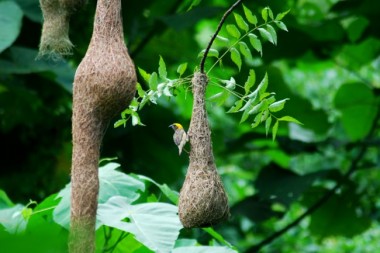
Experts say, birds will bring disease to a chicken farm. This has not been our experience (11 years now). All you need is the will to live with nature, and put to practice modern scientific knowledge about dieases. The costs involved is marginal. The benefits to bio-diversity and the ecology, immeasurable.
Spread the word; it can be done.
10:42 Posted in Blog, Nature Farming, Sustainable Farming | Permalink | Comments (0) | Tags: weaver birds, weaver bird nests, ploceus philippinus, burung tempua, baya weaver, co-existing with nature
Mar 19, 2012
Interesting Trees At The Farm - I
Finally the kapok tree have fruits and the workers are looking forward to fresh stuffing for their pillows.
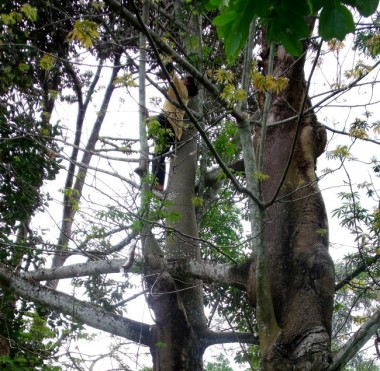
Up the kapok tree shaking the pods (fruits) down.
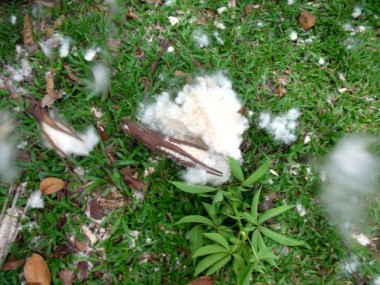
Fallen pods (actually fruits)
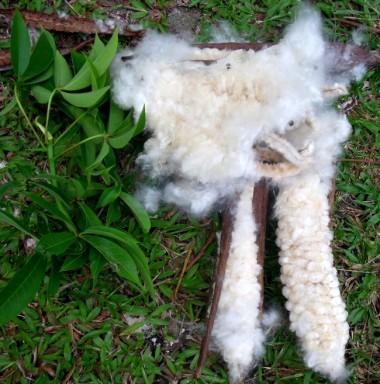
Close up of pods, the fluffy kapok fibre, and leaves.
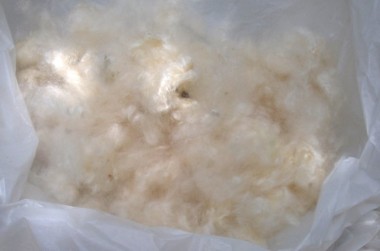
The fibre that will be used to stuff the pillows.
Isn't it time to reintroduce these fibres? They were replaced by cheap material made from petrochemicals. It may be the time now to start bringing these fibres back using modern technology to treat them to last longer etc. A kapok tree can remain productive for 500 years; how's that for sustainability!.
At the farm, we are constantly looking for material found in nature to use and to reuse.
15:10 Posted in Sustainable Farming, Useful Plants | Permalink | Comments (0) | Tags: kapok, ceiba pentandra, sustainable farming, sustainable forestry, income generating forest trees








